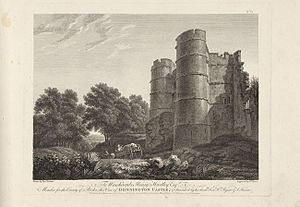Name William Byrne Role Engraver | Died 1805 | |
 | ||
Children Anne Frances Byrne, Mary Green, Elizabeth Byrne, John Byrne, Letitia Byrne | ||
William Byrne (1743–1805) was an English engraver.
Contents

William byrne buliding bridges
Life
Byrne was born in London in 1743. After studying some time under his uncle, an artist little known, he went to Paris, where he became a pupil of Aliamet, and afterwards of Wille. As well as making individual plates, he worked with Thomas Hearne on the Antiquities of Great Britain, which they jointly published in 1786.
He died in London in 1805, and was buried in Old St. Pancras churchyard. He was the father of painters John Byrne and Mary Green. Landscape engraver John Landseer was his pupil.
Works
His works are considerable; the following are the most deserving of notice:
References
William Byrne (engraver) Wikipedia(Text) CC BY-SA
